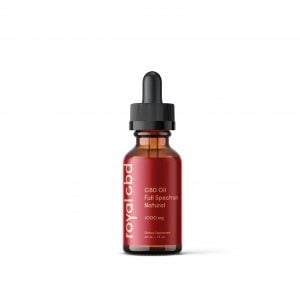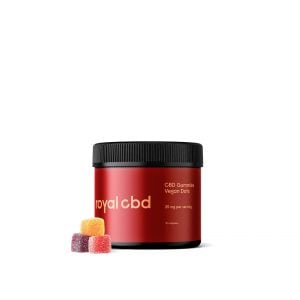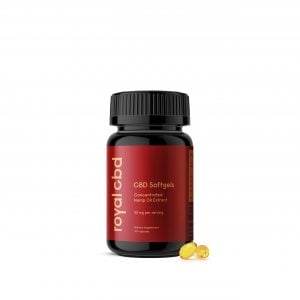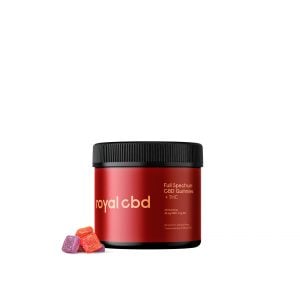If you’ve taken CBD, it’s probably occurred to you to ask yourself, “how is CBD oil made?” After all, if you’re ingesting something, it’s a smart idea to know what you’re taking.
There are four different processes that manufacturers can use to make CBD oil. Depending on the method they choose, the product itself will have distinct characteristics.
When evaluating the dizzying array of CBD products on the market, you’ll be able to narrow down your decision just by knowing which process has been used. For example, if you want to ensure that you’re taking pure CBD without any THC present, then you’ll want to take CBD made with the isolate method.
What all these processes do have in common is that there are numerous stages involved in extracting CBD oil from the hemp plant and then refining it for consumption. In some cases, it can take several months to have a finished product. At Royal CBD, we use state of the art supercritical CO2 extraction techniques, but for information’s sake, we’ll cover methods we don’t utilize here as well.
The Overall CBD Oil-Making Process
First things first—the purity of the plant must be tested to verify the THC content is below .3% and that the CBD content will be consistent with any labeling claims.
Then, it’s time to extract the oil. The flowers get crushed and ground up, increasing their surface area. The crushed flowers are put in an extraction machine, where a solvent (usually either CO2 or ethanol) dissolves the required extracts at very high-pressure levels.
Next is waxing and filtration. The oil gets dissolved again in a food-grade solvent. Wax, fat, and other purities are filtered out to increase the potency of the oil. The concentration will depend on the solution that’s being made.
Some of the filtration methods commonly used include vacuum filtration, wintered filtration, gravity filtration, or pour-through filtration. This step may be repeated one or numerous times to reach the desired purity level.
Wintered filtration, also referred to as winterization, isn’t always necessary. It’s needed when the oil was extracted “supercritically,” meaning at high pressure or high temperature. Because the temperature or pressure was so elevated during the extraction process, the product at this point is crude and will contain a lot of impurities that need to be filtered out.
Then, the solution is distilled to remove final impurities and extract only the purest CBD and desired cannabinoids. The distillation process requires a great deal of skill and expertise to prevent terpenes and cannabinoids from being destroyed. Technicians must adhere to standards for temperature and circulation to ensure a quality product.
Once this process is complete, the CBD is ready to be isolated. A purity goal is kept in mind (often at least 99.5%), and similar to the filtration process, the isolation procedure may also be repeated.
After the CBD is isolated, it’s ready to be mixed into a formulation. This will be a food-grade carrier. Some of the most popular options include:
- Liquid or powdered capsules: These are taken like a supplement and ideal for people who want a measured and controlled dose of CBD. Our soft-gel capsules are an example of this option.
- CBD tinctures are drops meant to be placed under the tongue before swallowing, which allows for quick absorption through the mucous membranes. This type of CBD tends to be the fastest acting.
- Topical solutions are applied to the skin directly. They are meant to interact with endocannabinoid receptors in the skin.
- Edibles include food-products such as gummies, chocolates, candies, etc.
When CBD is mixed with a carrier, there’s a chance that it can lose its potency. So, the finished product is tested to ensure the concentration levels are consistent with the goal. It also is tested for heavy metals, microbes, pesticides, and any other contaminants that could affect safety.
CBD Oil Production Methods
Depending on the production method, the solvents and equipment used in the manufacturing process will differ. There are four methods utilized today. Each has merit, though the CO2 extraction process tends to be looked at the most favorably by consumers and connoisseurs.
CBD Whole Plant Extract Method
Also called full-spectrum, this method is popular among people looking for the “entourage effect.” What this means is that the CBD product will contain several properties of the plant, not just the CBD isolates. The final product could include some THC, though to be sold as hemp CBD, the threshold is less than 0.3%.
Some believe that consuming all the micro-ingredients of the organic hemp plant, and not just the isolated CBD, will yield more benefit. The theory is similar to getting your nutrients from food versus a vitamin that isolates only some characteristics of the food source.
Isolate Method
In this process, only the pure CBD is extracted. Everything else is filtered out. People who are looking for a THC-free experience tend to prefer isolates.
CO2 Extraction
Also known as supercritical carbon dioxide extraction, CO2 is a relatively new process that uses carbon dioxide as a solvent. This is a favorable alternative to a chemical process and is used in the food industry for items like coffee and omega-3 oil.
While this process is the most expensive, it produces the highest quality and purest product, and that’s why it’s our extraction method of choice at Royal CBD.
Ethanol Extraction
This process uses ethanol to remove the CBD from the cannabis plant. It’s faster than the CO2 extraction method, and it doesn’t require sophisticated equipment. However, given that ethanol is flammable, there’s some risk when making CBD oil this way.
Choose Royal CBD
Understanding how CBD is oil is made and what to look for on a label can protect you as a consumer and also help you select the best product for your needs. Though CBD is legal throughout the US, it is not yet regulated in a meaningful enough way to protect your health and interests.
Knowing that a product was made in a reputable facility and tested in a third-party lab will help ensure that you get what you pay for. You can rest assured on both counts that’s what you’ll get with our products. Check out our full product line-up today.






